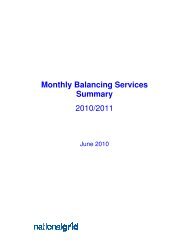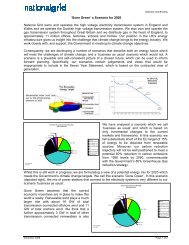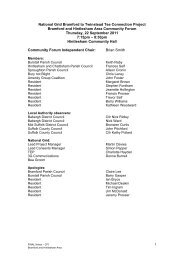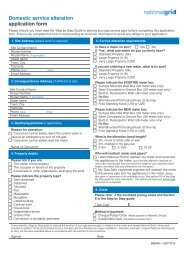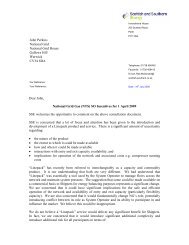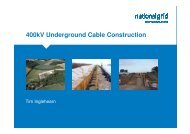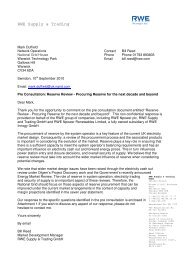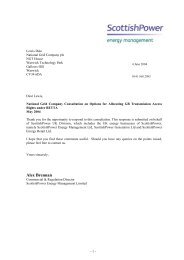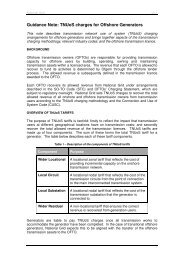appendix a - National Grid
appendix a - National Grid
appendix a - National Grid
Create successful ePaper yourself
Turn your PDF publications into a flip-book with our unique Google optimized e-Paper software.
ANNEX E: THE ASSESSMENT OF FLOOD RISK<br />
General Principles<br />
TEP on behalf of <strong>National</strong> <strong>Grid</strong><br />
King’s Lynn 400kV Connection<br />
110488-FRA-R1<br />
Properly prepared assessments of flood risk will inform the decision-making process at<br />
all stages of development planning. There should be iteration between the different<br />
levels of flood risk assessment.<br />
Any organisation or person proposing a development must consider whether that<br />
development will not add to and should where practicable reduce flood risk. The future<br />
users of the development must not be placed in danger from flood hazards and should<br />
remain safe throughout the lifetime of the plan or proposed development and land use.<br />
At all stages of the planning process, the minimum requirements for flood risk<br />
assessments are that they should:<br />
• be proportionate to the risk and appropriate to the scale, nature and location of the<br />
development;<br />
• consider the risk of flooding arising from the development in addition to the risk of flooding<br />
to the development;<br />
• take the impacts of climate change into account;<br />
• be undertaken by competent people, as early as possible in the particular planning<br />
process, to avoid misplaced effort and raising landowner expectations where land is<br />
unsuitable for development;<br />
• consider both the potential adverse and beneficial effects of flood risk management<br />
infrastructure including raised defences, flow channels, flood storage areas and other<br />
artificial features together with the consequences of their failure;<br />
• consider the vulnerability of those that could occupy and use the development, taking<br />
account of the Sequential and Exception Tests and the vulnerability classification<br />
including arrangements for safe access;<br />
• consider and quantify the different types of flooding (whether from natural and human<br />
sources and including joint and cumulative effects) and identify flood risk reduction<br />
measures, so that assessments are fit for the purpose of the decisions being made;<br />
• consider the effects of a range of flooding events including extreme events on people,<br />
property, the natural and historic environment and river and coastal processes;<br />
• include the assessment of the remaining (known as ‘residual’) risk after risk reduction<br />
measures have been taken into account and demonstrate that this is acceptable for the<br />
particular development or land use;<br />
• consider how the ability of water to soak into the ground may change with development,<br />
along with how the proposed layout of development may affect drainage systems; and<br />
• be supported by appropriate data and information, including historical information on<br />
previous events.



